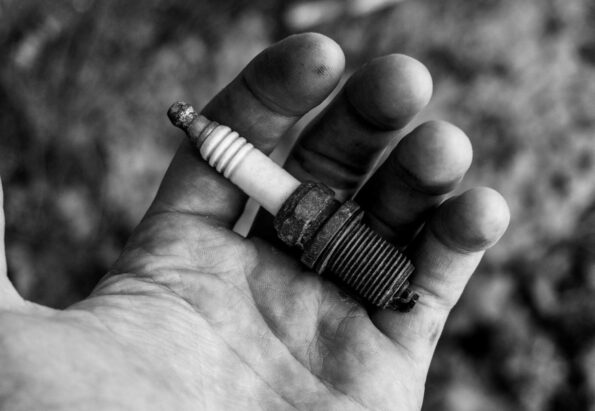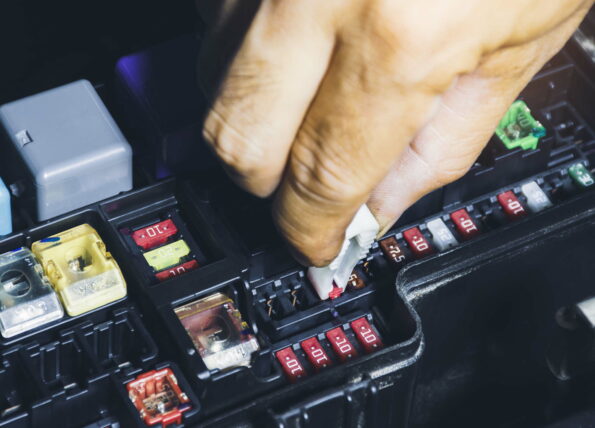Learning to drive is quite challenging. One of the most common vehicle problems you will find is a car not starting. As a beginner driver, a vehicle not starting can cause you a lot of grief. The good news is that most causes are simple with equally straightforward solutions.
When the starter clicks but the ignition doesn’t turn on
When you turn the key or push the started button, if you hear a click or a high-pitched screech, there’s something wrong with the starter motor.
Either there is no power or not enough power reaching the starter, or the starter motor has expired. The most common causes of this problem are a flat battery or a faulty battery cable.
If the battery is flat you can:
- Get a jump start from another motorist
- Try jump starting the car yourself (only works with manual vehicles)
- Call a tow truck and have it towed to a garage
- Call a roadside service company who can either jump start your car, or do a battery replacement.
You’ll need to diagnose why the battery is flat. Either:
- It’s expired (they only last a few years), and will need to be replaced
- The alternator has a fault
- The battery cables are corroded or loose
- Other cables within the engine are damaged or loose
Power generated by the battery needs to reach the starter otherwise the car can’t start.
Key sensitivity
Key sensitivity in the ignition is critical for a car to start. The ignition system has to recognize the key for the vehicle to start. If your ignition system cannot identify the key, it won’t start. Therefore, you should analyze your key and see if it is damaged, which might be causing your car not to start. If so, you will need a car key replacement. Car keys issues are not apparent right away and are difficult for beginners to solve.
There’s no click when you turn the key
If the car will not start when you turn on the ignition, and there’s no sound of anything attempting to start, something electrical in the vehicle has failed, or the battery is completely dead.
First, however, check that your gear lever is not in D (drive), but is in P (park) or N (neutral), and that you are following the correct starting procedures (e.g. clutch in, gear lever in neutral).
Sometimes the problem lies in a faulty starter solenoid or battery cables. Check is the battery cables. If the wires are dirty, loose, or corroded, that can also cause your car not to start.
The car doesn’t start and you smell fuel or see white smoke
If you can smell fuel or see white smoke coming from your exhaust when the car is turning over (i.e. you are cranking the engine), there are three possible causes for this:
- You may have flooded the engine (you turn on the ignition and release the accelerator pedal, but nothing happens)
- There is a leak in one part of your car’s fuel system
The car’s engine could be flooded and you have fouled the spark plugs. You may need to be towed to a mechanic who will clean or replace the spark plugs, and let the excess fuel evaporate. Alternatively, you can try pushing the accelerator right to the floor and try cranking the engine again (this introduces more air into the mix and helps it fire up).

For fuel leaks you might notice a puddle under the car. The car might only leak when it’s on a slope or when the tank is quite full. The best way to fix this is to take the vehicle to a repair shop and have it checked by a professional.
If your car engine cranks but won’t fire up
If you recently turned the car on and off for a very short time, for example to move it a few metres, there could be the same issue as when it’s flooded. Try starting it with the accelerator pushed to the floor.
The other potential diagnosis is a problem with your ignition coil.
The biggest question is whether or not you’re getting a spark. If you are, then there is something wrong with how the fuel/air mixture is being ignited in the engine’s cylinders. That means that there is a problem with your ignition coil.
You can also try swapping fuses in your car. If you suspect something wrong with one particular relay, try swapping it with one from another nearby component. Make sure they are the same rating.

A car not starting can be a troublesome issue for a learner driver. If there’s no click when you turn on the ignition, smell gas or see white smoke coming from the tailpipe, or don’t hear the engine click, it is often an issue with an ignition. The above solutions should work, but if this is not the case with you, it’s time to have your car towed to a nearby garage as ignition/steering lock issues are beyond beginners’ capabilities.
